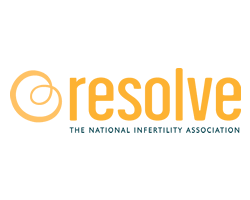After you have made the decision to officially embark upon your surrogacy journey, have been matched with your ideal surrogate, and have read and signed your contract together, you can begin planning and preparing for the next big milestone for surrogates and intended parents: the IVF transfer. When educating yourself about IVF transfers through speaking with your physician and conducting your own research, you will become familiar with the common debate of fresh versus frozen embryos. Which is recommended more? Does one have a higher success rate than the other? Is there really a big difference between the two?
Traditionally, surrogates who would undergo in vitro fertilization (IVF) would almost always utilize a fresh embryo transfer (ET) if it were an option. If any healthy embryos happened to be left after the initial ET, then those could be frozen to allow for a second pregnancy or a second attempt at pregnancy if the first ET was unsuccessful. Because the embryos were frozen by a slow freezing method, frozen embryo transfers, or FET, were considered the backup plan and not typically recommended for a first attempt.
Due to many medical and technological advances over the years, embryo freezing techniques have greatly improved and are now recommended much more than they once were. Many IVF centers now utilize a faster freezing cycle known as vitrification which decreases the chances of the embryos developing ice crystals. The renowned success of vitrification has led to physicians no longer needing to transfer as high a number of embryos during the fresh ET; instead, they are now comfortable transferring fewer embryos, and if the surrogate does not become pregnant, they can then try the FET.
Although a fresh embryo transfer is still often recommended as the first course of action if possible, a frozen embryo transfer is not something that should be feared or avoided. In the last decade, transferring fewer embryos during the fresh transfer has not led to decreased pregnancy success rates, but it has led to a decrease in higher order multiples, in turn leading to healthier pregnancies and healthier babies. Thanks to improvements in embryo transfer technology, IVF success rates are now the best they have ever been in the history of surrogacy.
When it comes time to approach the topic of embryo transfers with your physician and surrogate, be open about your comfort levels, including how many embryos you both are comfortable with transferring as well as your thoughts on using frozen embryos. In certain situations, frozen may be your only option.
At Surrogate Solutions, we understand that both surrogates and intended parents alike will have many questions regarding the IVF transfer and which course of action will be the best choice. If you would like to discuss the surrogacy or egg donation process in more detail or simply receive a more personal consultation, please do not hesitate to contact Surrogate Solutions or Egg Donor Solutions today!
We help Intended Parents Create Happy Families via Egg Donation & Surrogacy with the help of
caring Egg Donors & Surrogates.
Why use an agency, Surrogate Requirements, Can I be a Surrogate?, Facts about Surrogacy, Information on surrogacy, What our agency can offer you , Surrogacy FAQs, Families who need you, Learn more, Apply now.







